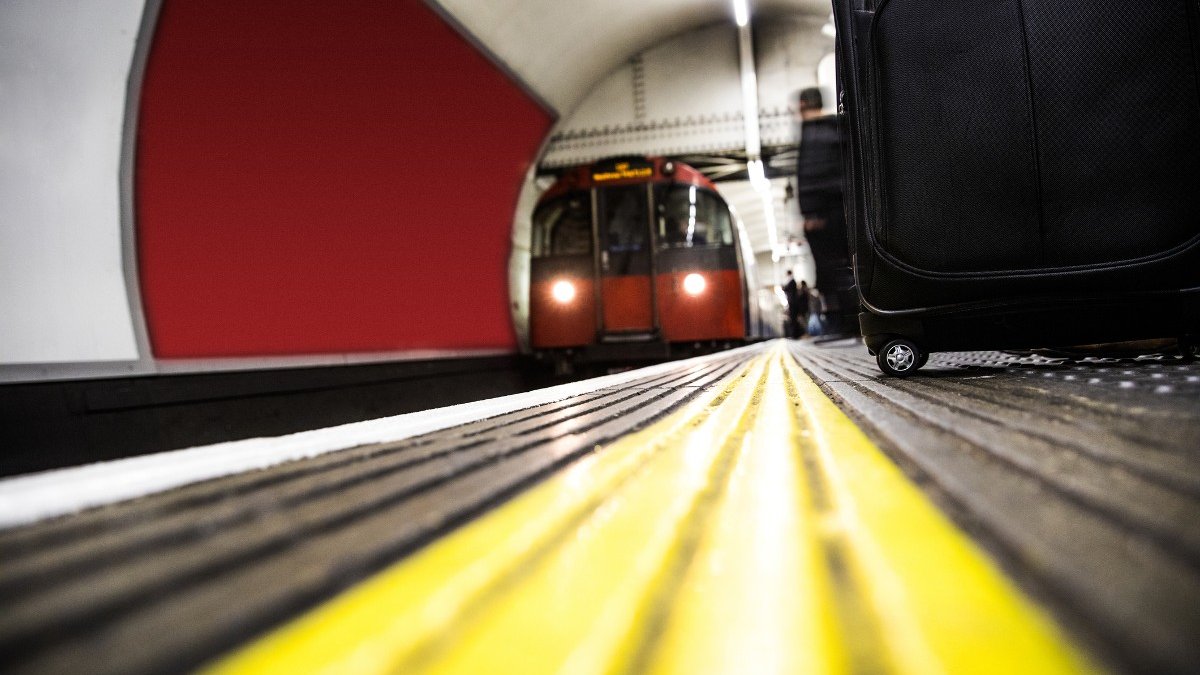Better ventilation could be key for London Underground to manage air quality, finds new study
A lack of fresh air was found in a deep London Underground station, and air pollution is at its worst during the evening rush hour, according to new research led by the University of Surrey, which was conducted as part of the Engineering and Physical Sciences Research Council-funded INHALE project.

Surrey's Global Centre for Clear Air Research (GCARE) collected airborne particulates on a deep-level (around 18 meters below ground) platform in South Kensington station. The results found that the underground environment they tested exceeded the World Health Organization air quality guidelines for fine and coarse air pollution particles*, although remains well within the limits set by the Health and Safety Executive.
The pollution collected was analysed using an electron microscope by Imperial College London to test their makeup, which detected tiny amounts of ultrafine (100 nanometers or less) particles, including iron, manganese and traces of chromium and toxic organic matter.
Professor Prashant Kumar, study lead and Director of GCARE at the University of Surrey, said:
"More work needs to be done to understand how the metal traces in the small airborne particles impact people's health. In the meantime, we recommend that consideration is given to improving ventilation on the London Underground where possible.
"We accept that air pollution on platforms is a very complex problem to solve and that an effort is being made to clean the Underground during quieter periods. Our team points to the newly opened Elizabeth Line as an example of good practice - in particular, the use of a screen between the train and the platform to protect passengers from pollution caused by the trains."
The monitoring and collection of particles took place on the eastbound Piccadilly Line platform in South Kensington station, which also serves the District and Circle Lines. The Piccadilly Line is a deep-level line that is relatively closed to outside air.
The team monitored air pollution at one platform in the station during operating hours (5 am until midnight) and non-operating hours. The study took place from September 2020 until October 2020.
Researchers also found that the underground station contained around double the amount of coarse air pollution particles during operating hours compared with non-operating hours - which they estimate could find their way to a person's human respiratory tract, but mainly to the nose and upper part of the lungs.
Furthermore, the research also indicated that 81 per cent of the smaller-sized fine particles that can go down to the size of nanoparticles (which is 1/800th of the size of a human hair) could find their way to the deeper region of people's lungs, which could potentially cause health problems.
Professor Alex Porter from Imperial College London, who led the examination of the particles collected under the electron microscope, said:
"Our research provides interesting preliminary evidence about the levels of pollution within one underground station. This is the first time the chemistry of the smallest particles, which can go deep into the lung and potentially damage cells, has been identified. Future research will help determine the potential health effects of such exposure."
The research has been published in the journal Science of the Total Environment.
The research is part of the Engineering and Physical Sciences Research Council-funded INHALE project, led by Imperial College London, on which the University of Surrey and the University of Edinburgh are partners.
###
Notes to editors
*Ultrafine (PM0.1), fine (PM0.1-2.5) and coarse (PM2.5-10) particles
- Reference: Kumar, P., Zavala-Reyes, J.C., Kalaiarasan, G., Abubakar-Waziri, H., Young, G., Ian Mudway, I., Dilliway, C., Lakhdar, R., Mumby, S., Kłosowski, M.M., Pain, C., Adcock, I.M., Watson, J.S., Sephton, M.A., Chung, K.F., Alexandra E. Porter, A.E. (2022). Characteristics of Fine and Ultrafine Aerosols in the London Underground. Science of the Total Environment 159315.Online: https://doi.org/10.1016/j.scitotenv.2022.159315
- Professor Prashant Kumar is available for interview upon request.
- Contact the University of Surrey Press Office via mediarelations@surrey.ac.uk or phone the Media Team Manager on 07720767399.
Media Contacts
External Communications and PR team
Phone: +44 (0)1483 684380 / 688914 / 684378
Email: mediarelations@surrey.ac.uk
Out of hours: +44 (0)7773 479911
